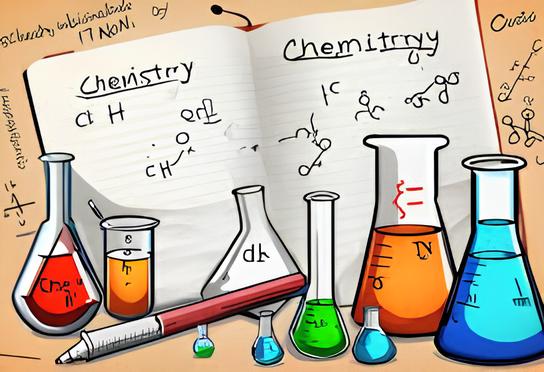JAMB Biology Note-Symbiotic interactions of plants and animals
Topics:
(a) Energy flow in the ecosystem: food chains, food webs and trophic levels
(b) Nutrient cycling in nature
i. carbon cycle
ii. water cycle
iii. Nitrogen cycle
Table of Contents
Symbiotic Interactions of Plants and Animals
Symbiosis refers to a close and long-term interaction between two different species. There are several types of symbiotic relationships, which can be classified based on the benefit to the organisms involved.
Types of Symbiotic Interactions
- Mutualism:
- Both organisms benefit from the relationship.
- Example: The relationship between bees and flowers. Bees get nectar from flowers, while flowers get pollinated by the bees, aiding in reproduction.
- Commensalism:
- One organism benefits, while the other is neither helped nor harmed.
- Example: Birds like cattle egrets follow cows and feed on insects stirred up by the movement of the cows. The cows are unaffected.
- Parasitism:
- One organism benefits at the expense of the other, causing harm to the host.
- Example: The relationship between ticks and mammals. The tick feeds on the blood of the mammal, harming it in the process.
- Saprophytism:
- Organisms that feed on dead and decaying organic matter.
- Example: Fungi like mushrooms decompose dead plant and animal matter, obtaining nutrients while breaking down organic material.
- Amensalism:
- One organism is harmed, while the other is unaffected.
- Example: The release of toxins by some plants (e.g., black walnut trees) that inhibit the growth of other plants nearby.
- Competition:
- Two organisms compete for the same resources, which can negatively impact both.
- Example: Different plant species competing for sunlight, water, or nutrients in the soil.
- Predation:
- One organism (the predator) kills and eats another organism (the prey).
- Example: Lions hunting and eating zebras.
- Cooperation:
- Organisms of the same species work together for mutual benefit.
- Example: Wolves hunting in packs to catch large prey.
Energy Flow in the Ecosystem: Food Chains, Food Webs, and Trophic Levels
Food Chains and Food Webs
- Food Chain:
- A food chain shows the linear flow of energy from one organism to another in an ecosystem. It begins with a producer and ends with a consumer.
- Example:
Grass → Grasshopper → Frog → Snake → Eagle
- Food Web:
- A food web is a more complex diagram showing the interconnected food chains within an ecosystem. It illustrates how various species are interdependent and highlights the energy flow across multiple trophic levels.
- Example: A web that connects grass, herbivores, and carnivores within a grassland ecosystem.
Trophic Levels
Trophic levels refer to the positions of organisms in a food chain based on their feeding relationships.
- Primary Producers:
- These are usually plants or phytoplankton that convert solar energy into chemical energy via photosynthesis. They form the first trophic level.
- Primary Consumers:
- Herbivores that eat plants. They are the second trophic level.
- Secondary Consumers:
- Carnivores that eat herbivores. They are in the third trophic level.
- Tertiary Consumers:
- Apex predators that eat secondary consumers. They occupy the highest trophic level.
Nutrient Cycling in Nature
Nutrient cycles are the processes through which essential elements like carbon, water, and nitrogen are recycled in ecosystems. These cycles are crucial for maintaining life on Earth.
i. Carbon Cycle
- Process:
- Photosynthesis: Plants absorb carbon dioxide from the atmosphere and convert it into glucose.
- Respiration: Organisms release carbon dioxide back into the atmosphere when they respire.
- Decomposition: Decomposers break down dead organisms, releasing carbon back into the soil and atmosphere.
- Combustion: Burning of fossil fuels releases stored carbon into the atmosphere.
- Significance:
- The carbon cycle regulates the amount of carbon dioxide in the atmosphere, affecting global temperatures and climate. An imbalance can lead to global warming.
ii. Water Cycle
- Process:
- Evaporation: Water from oceans, lakes, and rivers turns into water vapor.
- Condensation: Water vapor cools and forms clouds.
- Precipitation: Water falls as rain, snow, or hail back to the Earth’s surface.
- Transpiration: Water absorbed by plants is released into the atmosphere.
- Significance:
- The water cycle maintains the distribution of water on Earth, providing fresh water for plants, animals, and humans. It also plays a role in other nutrient cycles.
iii. Nitrogen Cycle
- Process:
- Nitrogen Fixation: Bacteria in the soil or in the roots of leguminous plants convert nitrogen gas from the atmosphere into usable forms (ammonia, nitrates).
- Nitrification: Ammonia is converted to nitrates by bacteria.
- Assimilation: Plants absorb nitrates from the soil.
- Denitrification: Denitrifying bacteria convert nitrates back to nitrogen gas, which is released into the atmosphere.
- Significance:
- Nitrogen is essential for plant growth as it is a key component of proteins and DNA. Bacteria play a critical role in converting nitrogen into forms that plants can use.
- Role of Leguminous Plants:
- Leguminous plants like peas, beans, and clover have a symbiotic relationship with nitrogen-fixing bacteria in their root nodules. These bacteria convert atmospheric nitrogen into ammonia, which the plants can absorb and use for growth.
Summary
- Symbiotic interactions such as mutualism, parasitism, and competition play crucial roles in shaping the relationships between plants and animals.
- Energy flow in ecosystems is depicted through food chains and food webs, which illustrate how energy is transferred across different trophic levels.
- Nutrient cycles, including the carbon, water, and nitrogen cycles, are vital for maintaining the balance of elements and supporting life on Earth.
- Human activities like deforestation and pollution can disrupt these natural cycles and lead to environmental problems like global warming.






